Why is the choice of post-baccalaureate course so important?
The choice of orientation after the baccalauréat has a direct influence on :
- Your academic success: A programme tailored to your skills increases your chances of success
- Your job prospects :Some courses offer better prospects on the job market
- Your motivation: Studying in a field you’re passionate about makes learning easier.
- Your personal/professional life balance: A job aligned with your values contributes to your well-being
According to statistics from the French Ministry of Higher Education, 30% of students change course in their first year. This reorientation, although rewarding, can be avoided with better preparation upstream.
Step 1: Conduct a Thorough Personal Assessment
Identify Your Interests and Passions
To choose your post-high school path wisely, start with honest self-reflection:
Key questions to ask yourself:
- Which activities make you lose track of time?
- Which school subjects do you naturally excel in?
- What topics interest you outside of school?
- Do you have hobbies that could become a profession?
Career guidance tools:
- Free career orientation tests (ONISEP, L’Étudiant)
- Professional interests questionnaire
- Meetings with a career guidance psychologist
Assess Your Skills and Aptitudes
A successful choice of study path relies on a realistic assessment of your abilities:
Academic skills:
- Analysis of your report cards over 2-3 years
- Identification of your strong and weak subjects
- Evaluation of your work capacity and organizational skills
Soft skills:
- Communication and expression (written/oral)
- Logic and analytical reasoning
- Creativity and artistic sense
- Leadership and teamwork
- Digital skills
Step 2: Explore Available Study Paths and Programs
Types of Post-High School Programs
Long-term university programs (3 to 8 years):
- General bachelor’s degrees (law, psychology, history, etc.)
- Health studies (medicine, pharmacy, dentistry)
- Sciences and technology
- Literature and humanities
Elite schools and selective programs:
- Engineering schools (INSA, Polytech, etc.)
- Business and management schools
- Art and design schools
- Institutes of Political Studies (IEP)
Short-term and vocational programs (2-3 years):
- BTS (Higher Technician Certificate)
- BUT (University Bachelor of Technology)
- Professional bachelor’s degrees
- Apprenticeship programs
Research Career Opportunities
Future-oriented careers to consider:
- Artificial intelligence and data science
- Ecological transition and sustainable development
- Health and well-being
- Digital communication and marketing
- Engineering and technological innovation
Resources for researching careers:
- ONISEP and Pôle Emploi career guides
- Professional testimonials on LinkedIn
- Career fairs and student forums
- Specialized websites (Welcome to the Jungle, Indeed)
Step 3: Seek Personalized Guidance
Consult Career Guidance Professionals
Career guidance psychologists (COP):
- Available at your high school or CIO
- Free personalized consultations
- Psychometric tests and skills assessments
Private career coaches:
- Personalized support over multiple sessions
- Innovative methods (design thinking, 360° assessment)
- Financial investment but intensive follow-up
Connect with Students and Professionals
Student networking techniques:
- Open days at educational institutions
- Student fairs (Salon de l’Étudiant, Student Fairs)
- Online platforms (Discord, Facebook groups)
- LinkedIn to connect with alumni
Relevant questions to ask:
- What is the actual workload like?
- What are the main challenges of the program?
- How does professional integration work?
- What advice would you give to a future student?
Step 4: Consider the International Dimension
Study Abroad Programs
Advantages of international programs:
- Mastery of foreign languages (a major asset on your CV)
- Cultural openness and adaptability
- International alumni network
- Enriching personal experience
Available options:
- Erasmus+ programs in Europe
- Partner universities outside the EU
- International dual degrees
- Gap years abroad
Develop Practical Experience
Opportunities to seize during studies:
- Mandatory and voluntary internships
- Student jobs in your field of interest
- Associative projects and volunteering
- Student competitions and hackathons
These experiences help validate your career choice and acquire skills sought by employers.
Step 5: Make an Informed Decision
Avoid Common Pitfalls in Career Choices
Common mistakes to avoid:
- Choosing to please your parents
- Following friends without personal reflection
- Being swayed by current trends
- Ignoring your own aptitudes and interests
- Not researching actual career prospects
Structured Decision-Making Method
Criteria to weigh:
- Alignment with your interests (40%)
- Match with your skills (30%)
- Career prospects (20%)
- Practical constraints (10%): cost, location, duration
Decision-making tools:
- Comparative table of programs
- Multi-criteria decision matrix
- 5-10 year career path simulation
Managing Stress and Uncertainty in Post-High School Choices
Accept That Career Choices Are Not Final
It’s important to remember that a career choice is never set in stone. Opportunities for reorientation, transitions between programs, and continuous learning allow you to adjust your path based on your evolving goals and the job market.
Reorientation options:
- Changing programs during the year
- Reorientation via Parcoursup
- Resuming studies after initial professional experience
- Additional training and specializations
Conclusion: Your Future Begins with an Informed Choice
Choosing your post-high school path in 2025 requires a methodical approach combining self-awareness, exploration of options, and professional advice. Take the time needed for this reflection, as it shapes your future personal and professional fulfillment.
Remember that every path is unique, and your success will depend as much on your motivation as on your initial choice of program. Stay curious, open to opportunities, and ready to adapt to changes in the professional world.
Key takeaways:
- Start thinking about your orientation as early as the first year of high school
- Seek multiple sources of information and connections
- Balance passion with realism
- Don’t hesitate to seek help from professionals
- Stay open to reorientation if needed
Your professional future begins today with the choices you make for your post-high school education. Approach this decision seriously but without excessive stress, keeping in mind that many opportunities will arise throughout your journey.





